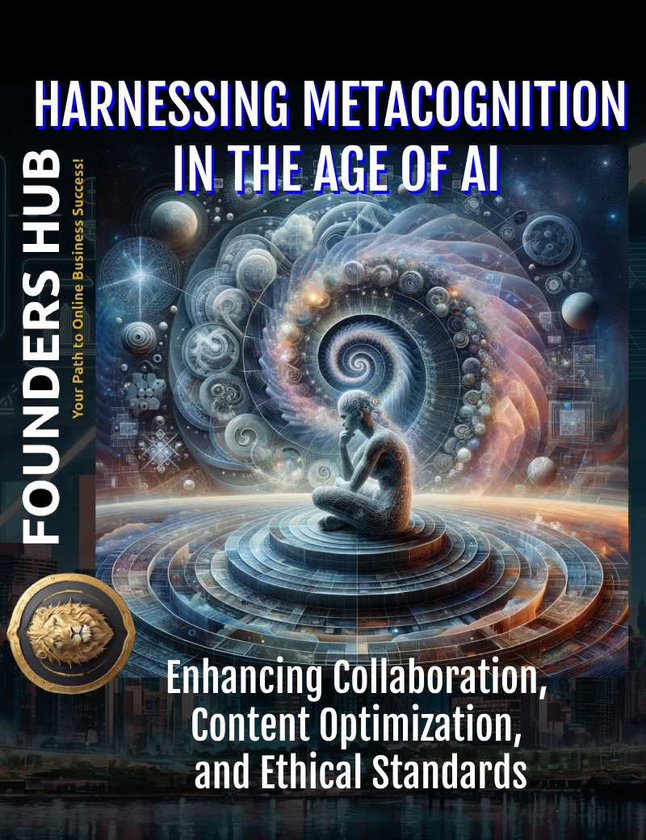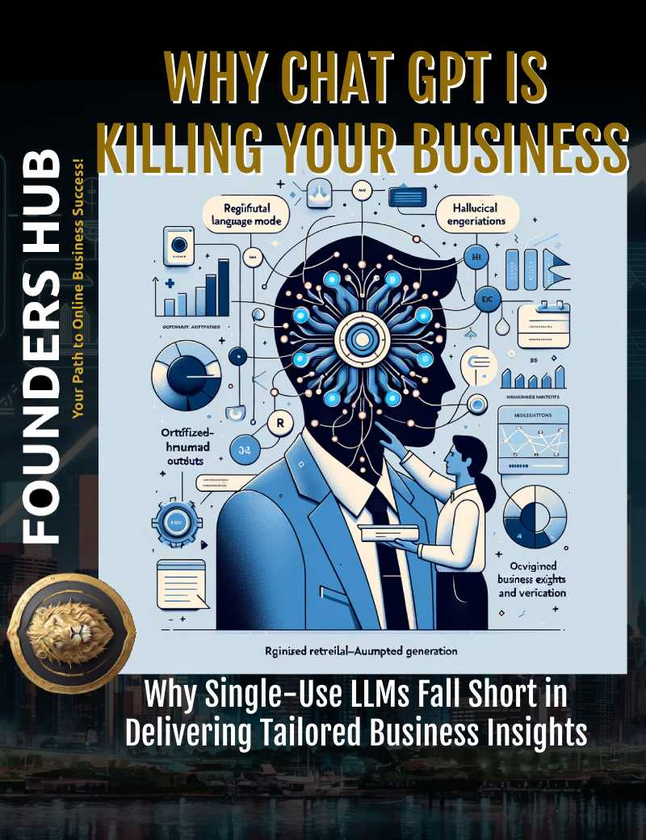In the rapidly evolving landscape of artificial intelligence (AI), the integration of metacognitive skills has become increasingly crucial for unlocking the full potential of human-AI collaboration. Metacognition, the ability to monitor and regulate one's own cognitive processes, plays a pivotal role in enhancing problem-solving, decision-making, and overall effectiveness when working alongside AI systems.
Key Takeaway: Metacognition empowers individuals to navigate the complexities of AI collaboration, optimize content strategies, and uphold ethical standards, ultimately leading to more effective and responsible AI integration across various domains.
Introduction
As AI continues to permeate various aspects of our lives, from personal assistants to content recommendation systems, the synergy between human cognition and artificial intelligence has become increasingly apparent. Metacognition, the awareness and understanding of one's own thought processes, serves as a powerful tool for individuals to harness the capabilities of AI while maintaining a critical and ethical perspective.
The importance of integrating metacognition and AI stems from the need to navigate the rapidly evolving technological landscape and address the challenges that arise from human-AI interactions. By cultivating metacognitive skills, individuals can better understand their own cognitive strengths and limitations, enabling them to effectively collaborate with AI systems and leverage their respective capabilities.
Metacognitive Skills in AI Collaboration
Understanding Metacognitive Skills
Metacognitive skills encompass three key components: planning, monitoring, and evaluating. These skills enable individuals to effectively manage their cognitive processes, set goals, monitor their progress, and assess the outcomes of their actions.
- Planning: Involves setting clear objectives, identifying strategies, and allocating resources effectively.
- Monitoring: Entails actively tracking one's progress, recognizing potential obstacles, and making necessary adjustments.
- Evaluating: Involves critically analyzing the outcomes, reflecting on the effectiveness of the chosen strategies, and identifying areas for improvement.
The relevance of these skills extends beyond individual problem-solving and decision-making; they are equally crucial in facilitating successful human-AI collaboration.
Dealing with Novel and Poorly Defined Problems
In the age of AI, individuals are often confronted with novel and poorly defined problems that require creative and adaptive solutions. Metacognitive skills play a vital role in tackling these challenges by enabling individuals to recognize the limitations of their knowledge and seek out alternative perspectives or resources, including AI-powered tools and systems.
For example, in the field of healthcare, AI-assisted diagnosis systems can provide valuable insights and recommendations, but human experts with strong metacognitive skills are essential for interpreting these recommendations, considering contextual factors, and making informed decisions that prioritize patient well-being.
Arbitrating in Collaboration
Effective human-AI collaboration requires a delicate balance of leveraging the strengths of both parties while mitigating potential biases or limitations. Metacognitive skills empower individuals to critically evaluate the outputs and recommendations provided by AI systems, ensuring that they align with ethical principles, domain-specific knowledge, and real-world constraints.
One notable example of successful human-AI collaboration can be found in the field of drug discovery. Pharmaceutical companies are leveraging AI systems to analyze vast amounts of data and identify potential drug candidates more efficiently. However, human experts with strong metacognitive skills play a crucial role in interpreting the AI-generated insights, considering potential side effects, and making informed decisions that prioritize patient safety and efficacy.
AI in Content Optimization
In the digital age, content optimization has become a critical component of successful online strategies, and AI has emerged as a powerful tool to enhance this process. From automating keyword research to optimizing content strategies and enhancing user experiences, AI is revolutionizing the way businesses approach content creation and distribution.
Automating Keyword Research
Keyword research is a fundamental step in any content optimization strategy, and AI tools have significantly streamlined this process. By leveraging natural language processing (NLP) and machine learning algorithms, AI-powered keyword research tools can analyze vast amounts of data, identify relevant keywords, and provide valuable insights into search trends and user intent.
Examples of AI-powered keyword research tools include:
- Semrush: Utilizes AI to analyze search engine results pages (SERPs), identify high-performing keywords, and provide comprehensive keyword analytics.
- Ahrefs: Employs machine learning algorithms to analyze backlink data, identify content gaps, and suggest relevant keywords for optimization.
- Moz Keyword Explorer: Leverages AI to provide accurate keyword suggestions, search volume data, and keyword difficulty scores.
Optimizing Content Strategies
Beyond keyword research, AI plays a crucial role in optimizing content strategies to ensure relevance, engagement, and quality. AI-powered tools can analyze user behavior, content performance, and search engine algorithms to provide data-driven insights and recommendations for content optimization.
For instance, AI-powered content optimization platforms like Clearscope and MarketMuse leverage machine learning algorithms to analyze top-ranking content, identify content gaps, and provide recommendations for improving content quality and relevance. These tools can suggest additional topics to cover, highlight areas that require more in-depth coverage, and even provide real-time feedback on content quality as it is being created.
Case studies have demonstrated the significant impact of AI on content marketing strategies. For example, a study by Clearscope found that businesses that implemented AI-driven content optimization strategies experienced an average increase of 47% in organic search traffic and a 92% increase in conversion rates.
Enhancing User Experience and Website Visibility
AI's impact on content optimization extends beyond content creation and optimization; it also plays a crucial role in enhancing user experiences and improving website visibility. AI-powered personalization algorithms can analyze user behavior, preferences, and browsing patterns to deliver tailored content recommendations and personalized experiences.
Additionally, AI is increasingly being used to inform search engine algorithms and content ranking factors. Search engines like Google employ machine learning models to analyze content quality, relevance, and user engagement signals, ultimately influencing website visibility and search rankings.
By leveraging AI for content optimization, businesses can not only create more engaging and relevant content but also improve their overall online presence and visibility, driving increased traffic and conversions.
Ethical Considerations in AI-Driven Content Ranking
While AI offers numerous benefits in content optimization and ranking, it is crucial to address the ethical considerations surrounding its use. As AI systems become more prevalent in shaping online experiences and influencing content visibility, issues such as transparency, bias, privacy, and fairness must be carefully addressed.
Ensuring Transparency
Transparency in AI algorithms used for content ranking is essential for building trust with users and stakeholders. Opaque or "black box" algorithms can raise concerns about potential biases, unfair practices, or unintended consequences. Efforts should be made to increase transparency by providing clear explanations of how AI systems make decisions and rank content.
Methods to improve transparency include:
- Developing interpretable machine learning models that can explain their decision-making processes.
- Implementing auditing and monitoring systems to track and evaluate AI system outputs.
- Encouraging open dialogue and collaboration between AI developers, content creators, and users.
Avoiding Bias
AI systems can inadvertently perpetuate or amplify biases present in the data they are trained on or the algorithms themselves. These biases can manifest in content ranking, potentially favoring or discriminating against certain topics, viewpoints, or demographic groups.
Strategies to detect and mitigate bias in AI systems for content ranking include:
- Conducting regular bias audits and testing for potential discriminatory outputs.
- Implementing debiasing techniques, such as data augmentation or adversarial training.
- Promoting diversity and inclusivity in the development and evaluation of AI systems.
Respecting User Privacy
The use of AI for content optimization and personalization often involves collecting and analyzing user data, raising concerns about privacy. It is crucial to strike a balance between leveraging user data for improved experiences and respecting individual privacy rights.
Best practices for safeguarding user data while using AI for content optimization include:
- Implementing robust data protection and anonymization measures.
- Obtaining explicit user consent for data collection and usage.
- Providing transparent information about data collection practices and user control over their data.
Prioritizing Fairness
Fairness in AI-driven content ranking is essential to ensure equal opportunities and prevent discrimination. AI systems should be designed and deployed in a manner that promotes equitable treatment and representation of diverse perspectives and content creators.
Examples of policies and frameworks that promote fairness in AI systems include:
- Developing and adhering to ethical AI principles and guidelines.
- Implementing algorithmic auditing and impact assessments to identify and mitigate potential harms.
- Fostering inclusive and diverse teams in the development and deployment of AI systems.
Conclusion
In the age of AI, the integration of metacognitive skills and ethical considerations is paramount for unlocking the full potential of human-AI collaboration and responsible content optimization. Metacognition empowers individuals to navigate the complexities of AI-driven processes, make informed decisions, and effectively leverage AI capabilities while maintaining a critical and ethical perspective.
By cultivating metacognitive skills, individuals can better understand their own cognitive strengths and limitations, enabling them to effectively collaborate with AI systems and leverage their respective capabilities. This synergy between human cognition and artificial intelligence is crucial for addressing novel and poorly defined problems, as well as arbitrating in collaborative efforts.
Moreover, the integration of AI in content optimization has revolutionized the way businesses approach content creation, distribution, and user engagement. AI-powered tools streamline keyword research, optimize content strategies, and enhance user experiences through personalization and improved website visibility. However, it is essential to address the ethical considerations surrounding AI-driven content ranking, such as ensuring transparency, avoiding bias, respecting user privacy, and prioritizing fairness.
As AI continues to shape our digital landscape, it is imperative to prioritize the development of metacognitive skills and the implementation of ethical frameworks. By doing so, we can harness the power of AI while maintaining a responsible and human-centric approach, ultimately fostering a future where technology and human cognition work in harmony to drive innovation, optimize content experiences, and uphold ethical standards.
Join us today for more Information, exclusive insights and members only AI training!



















